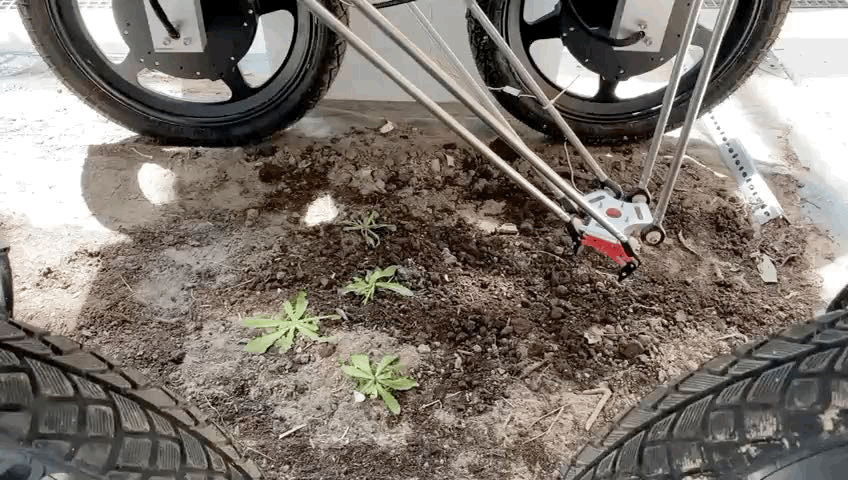Project Overview
This project involved designing and developing an AI-powered autonomous mechanical weeding robot to optimize farming efficiency by precisely identifying and removing unwanted plants. The system integrated computer vision, robotic manipulation, and autonomous navigation to automate the weeding process, reducing labor and chemical usage in agriculture. Technically, I am currently working part-time on the project from past 7 years from 2019 (Dev Stage: TRL-7)(now incorporated into Kaizen Robotics). If you like the tech details of addon laser based weeding tool find here.
Demo

My Contributions
System Architecture – Designed the overall hardware-software architecture, ensuring seamless integration between AI, robotics, and control systems.
Mechanical Weeding Tool Development – Engineered a precision weeding mechanism capable of selectively removing unwanted plants.
AI & Computer Vision Algorithms – Developed custom AI models and OpenCV-based image processing pipelines to detect, classify, and localize weeds for precise removal.
Robotic Manipulation – Implemented pick-and-place algorithms to control robotic arms for targeted plant removal.
ROS Integration & Navigation – Developed ROS drivers for real-time robot navigation, enabling autonomous movement across fields.
Technologies Used
- AI & Computer Vision – TensorFlow, OpenCV, PyTorch
- Robotics Middleware – ROS2 (Robot Operating System)
- Embedded & Control Systems – C++, Python, Embedded Linux
- Mechanical Design – CAD modeling for the weeding tool
Note: Quantitative impact metrics are not yet available, as the project is still undergoing pilot testing and refinements. Currently at TRL-7, we are working towards achieving the highest Technology Readiness Level (TRL).
Expected Impact
- Enhanced Efficiency – Aims to reduce manual labor and minimize reliance on chemical herbicides.
- Precision Weeding – Designed to improve plant health by selectively removing weeds while preserving crops.
- Autonomous Operation – Enables real-time, AI-driven decision-making for fu
Note: Source code or simulations is not released as open source, as some of the software modules and algorithms are proprietory. (The upcoming version, open source agricultural mobile robot(OSAM) platform of the ecoterrabot (OSAMBot will be open source, including design, software drivers along with documentation to reproduce).